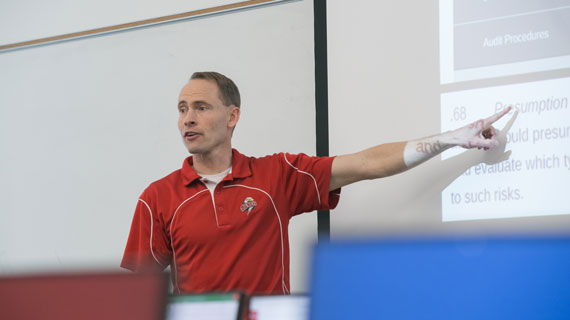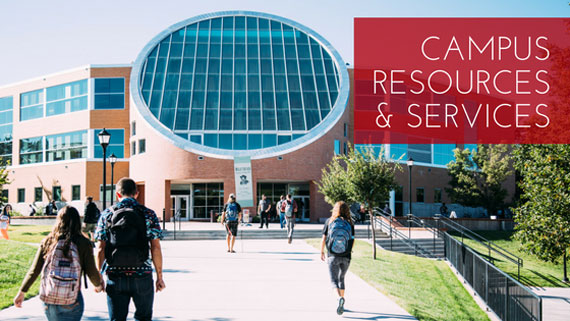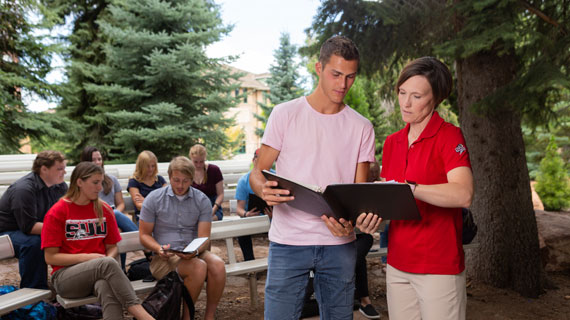How to Email Your Professor in College
Posted: October 15, 2019 | Author: Tiago Rodrigues da Costa | Read Time: 8 minutes

Yes, writing an email to a professor can be harder than you thought. You might be sitting in your car before work and start writing your professor to say you don't have the assignment done. It's ok, it's understandable! Your shift is about to start and the email has to be written. You write, erase, and write again. It's hard to know where to start, and that's when you wish you had some help. No problem, Southern Utah University professors are here to help you write an email to a professor like a pro.
Five Steps for a Better Email
1. Be Professional
Most professors receive dozens of emails per day, sometimes hundreds. And in addition, professors have many different channels of communication. The majority of the time, professors lecture more than one class and can have dozens of students per semester. Other professors may run personal projects or research projects on campus. For that reason, students have to be highly professional in their approach. This professional approach will distinguish the average student to the student who stands-out in class.
"In general, I get a low number of emails from students," said Dr. Todd Petersen, professor of English. "I think this happens because students aren't used to using email, so they often don't. However, emailing is a major form of workplace and professional communication and students need to practice their email writing skills if they want to be ready for professional life."
Although it may seem scary to email your professors when you know they are busy, never forget the main purpose of a school's environment is for students to learn and for professors to teach. Thus, the student-professor relationship is a really important one to cultivate. The way relationships function often define the success of the failure of any corporation, universities included. Like any interpersonal relations, there are necessary steps to respect, and professionalism should be a priority.
2. Write a Clear and Concise Subject Line
After assuming a professional attitude, the next step is the subject line. For many professors, the subject line is the most important part of the email. For example, for those professors who cannot open all the emails they receive, the subject line is going to show them if they should open it or not. And for those who open all emails, the subject line will show them when to open.
Subject lines should be straightforward and have the most relevant information in the shortest space possible. It can be a question or a statement, and should clearly state the topic of the email and the purpose for contacting the professor. If there's an urgency to the email, writing "Urgent" or "Important" in the subject line is helpful for professors to take a quick action.
"If you're emailing regarding a class I'm teaching, put the course number or course name in the email subject," said Dr. Courtney Paulson, assistant professor of business analytics. "Try to avoid ambiguity as much as possible. For example, don't use subject lines like, ‘missed class.' Instead say, ‘ACCT 2000 – Missed Class on Monday.' That helps us immediately know we need to pay attention, and it also helps us find your email if we need it again later."
In any case, make sure you always write a clear and concise subject line. Emails without subject lines are often lost in the spam folder of your professor's email, and that is the last thing you want to happen.
3. Address Your Professor Accordingly
The salutation is more important than many students think. And although this approach can be different from professor to professor, it's a great idea to play it safe and be formal first. In other words, the relationship between student and professor is formal and professional It would be a mistake to address an email with "Hey [first name]." Addressing your professor accordingly shows you respect your professor's profession and life experience.
"In an initial email, the student should always address the instructor very formally, with ‘Dear Professor [last name]'," said Dr. Kurt Harris, director of learning abroad and associate professor of English. "If the instructor responds in a less formal way, with ‘Hello,' for example, the student can then respond with ‘Hello Professor [last name].' But never begin an email with ‘Hey,' and only use the professor's first name if they told you explicitly that they prefer you address them by their first name."
In addition to that, misspelling your professors' name while addressing them can be seen as a lack of attention, and perhaps disrespect. Always check to make sure the name is correct. Also, make sure you know in advance if your professor has a doctorate degree, and in that case, add "Dr. [last name]" in the salutation. Again, this will always depend from professor to professor.
"Mistakes happen, and most professors are human enough to recognize that," said Dr. Paulson. "If the autocorrect accidentally spells my name ‘Paulsen' instead of ‘Paulson' once, I'll let it go with no hard feelings. If it happens repeatedly, though, it's going to start affecting how I respond."
4. Add a Signature
After composing the body of the email with questions or concerns, should you end with a signature or not? This is a topic that is somehow divisive. Some professors believe it's not appropriate for a student to have links to their social media, or their cell-phone number. Other professors believe it's okay and it can actually be positive for professors to know more about students out of the class' environment.
Some students are creators by nature, and signatures on their emails are important for professors to know more about the students' life. You may gain your professor's respect if your professor knows, for example, that you made volunteer work in a different country, or that you have a weekly blog with poetry. That kind of creation distinguishes students in class, and the majority of the professors would appreciate that. But, here again, it's important to understand the purpose of that signature. Perhaps you want to show your website and that's fine. Always make sure you know the receiver's expectations first, and make sure you understand the difference between academic and personal life.
"Signatures in an email are important," said Rosalyn Liljenquist, assistant professor of library media and scholarly communications. "Many in higher education include a favorite quote or link to their Goodreads account to show what they are reading. It would help me to know more about the student."
5. Know Your Audience
If you are a charismatic person and want to display that in your email, do it. But, again, never forget the rule of thumb: Play it safe. Some professors may appreciate emojis, but the majority do not. Some may appreciate a joke and some may not. The guideline is to understand your professor first.
"I remember one from a student at the end of the semester, where he started the email with a tirade about how his grade in my course was too low," said Dr. Paulson. "He was demanding a chance to raise it, only to start the next paragraph with, ‘Just kidding, I loved your class.' But, that's always better to do once you know how the professor will react to your playfulness."
Humor is not just different between countries, it can be also different between states, cities, or even households. Be sure that humor will not be perceived in the wrong way.
"I have received emails from students I don't know very well and it seems that they're trying to be funny," said Dr. Harris. "Their humor is rarely conveyed effectively. When two people communicating via email don't know each other well, the sender's 'humor' can easily be viewed as weird or disrespectful."
If Important, Meet in Person
There are many reasons to skip an email and visit a professor in person. If you are having trouble understanding the content of the class and want to clarify something, or are an international student feeling a language barrier. Or, if you are having an issue in your personal life and don't know where to go. Professors will most likely be willing to meet with and help you or recommend someone else more qualified to help.
"It depends upon the situation," said Deena Marchal, graduate coordinator for the College of Humanities and Social Sciences. "I find that general assignment questions or overall discussions are great in both class and through email or Canvas. If it is a personal matter or a confidential discussion about any subject, face-to-face is best and I will always make time to help students in need."
Professors are required by the university to have office hours. And the purpose of the office hours is for professors to allow students to meet them in their office and talk about anything academic life-related. They usually open to meeting with students in their office two to three times per week, sometimes more, and usually at the beginning of the semester, the office hours are discussed in class.
Don't forget to play it safe, be polite and be smart. Certainly, students and professors are not perfect, but if emailing your professor makes you anxious or nervous, because you want to do it the best way possible and you don't know how to do it, stop by your professor's office and talk about it.
This article was published more than 3 years ago and might contain outdated information or broken links. As a result, its accuracy cannot be guaranteed.
Tags: Campus Resources



